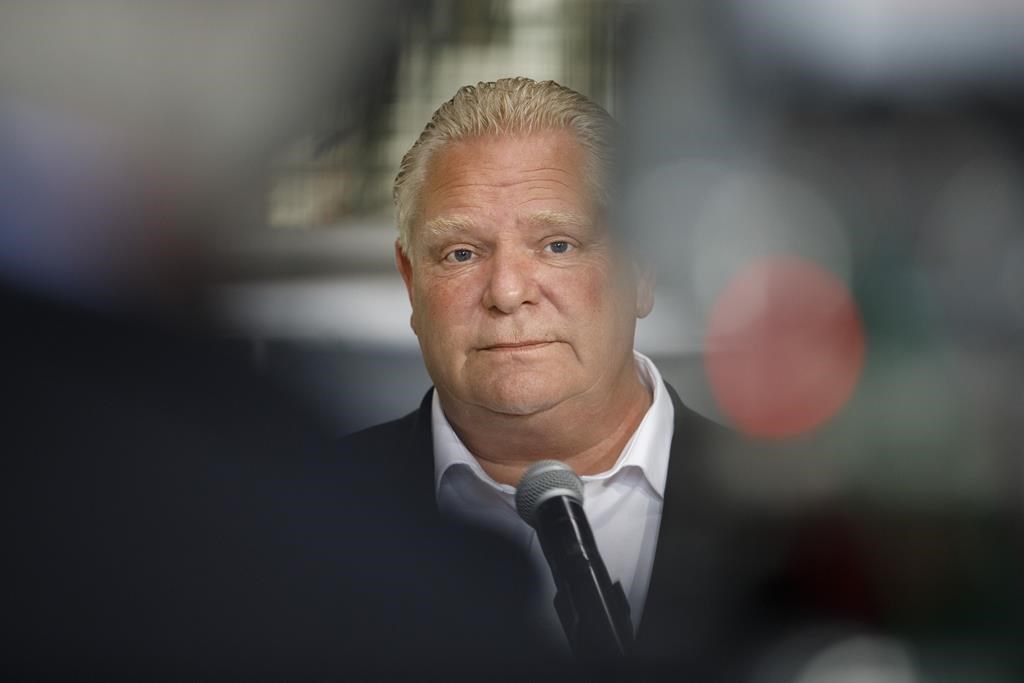The Ontario election campaign has come to a close. It’s been over a month since the results came in. This means the Liberals have had time to reflect on their poor performance, the NDP has had time to reflect after their leader resigned, and obviously, the Progressive Conservatives have had time to name their new cabinet and new Parliamentary Assistants.
The Ontario Liberal Party hasn’t yet named a new Interim Leader, following Liberal Leader Steven Del Duca stepping down as leader of the party. Del Duca as leader of the party undoubtedly did things that perhaps other leaders wouldn’t have been able to do, such as pay off the party’s debt. However, there were most definitely questions as to his performance, only winning the party eight seats in the legislature and not evening winning his own riding of Vaughan-Woodbridge. The riding of Vaughan-Woodbridge has always been a toss-up riding, of course, it’s held federally by Liberal MP Francesco Sorbara and provincially by Michael Tibollio from the PCs, who of course is an Associate Cabinet Minister in the Government. Tibollio defeated Del Duca in 2018, and he did so again in 2022. The Liberals will need to do much reflection, which of course is something Liberal insiders and strategists are already doing. The party will need to pick a new permanent leader before for the next provincial election. It’ll need to be someone who can appeal to audiences specifically which Del Duca wasn’t able to do. The party is likely still recovering from the 2018 campaign, which was quite devastating for the party, and so no matter who was the Leader of the party, it still probably would’ve been a challenge to attract the groups of people Del Duca wasn’t able to do.
Del Duca didn’t make the number of gains he needed to in the GTA. Historically the GTA is generally where progressive parties such as the Liberals have their most success. There were also many examples of how Ontario’s system is designed to elect individual MPPs for each individual riding, such as Barrie-Springwater, a riding where the former Mayor of Barrie, ran against the incumbent Attorney General and MPP, where the former Mayor came in very close considering this riding is usually seen as a safe PC riding in the legislature. There were also many ridings, which some local candidates admit they could’ve had better organization and better ground game, ridings such as Ajax, Mississauga Streetsville, or even University-Rosedale. It can’t be read into very much though, nevertheless because the election was a contest of name recognition and the PC Leader had been on everyone’s television screen nearly on a daily basis throughout the pandemic, and the Liberal Leader would hold semi-daily press conferences but obviously in a crisis as big as the pandemic people want to know what the person in charge is saying because he’s ultimately the one with the decision making power at Queens Park.
The New Democrats didn’t make any gains on election night, but it was ultimately still enough to make NDP Leader Andrea Horwath announce her resignation on the night of the election. The NDP find themselves in quite a different situation from the Liberals because the NDP received thirty-one seats at Queens Park, still, enough for them to remain in the official opposition, and for Horwath to lead the opposition. Many people would argue she did the job of Opposition Leader very well, in being a critic of the Ford Government’s COVID-19 response and lending solutions in her press conferences that would follow any big decision from the Ford Government. The NDP is also in a different situation from the Liberals, primarily because they’ve already selected an Interim Leader. The party announced that they chose Toronto-Danforth MPP Peter Tabuns to serve as their leader on an interim basis. Tabuns has served in many roles in terms of Critics within the NDP caucus, he is well-respected by the NDP caucus and will likely serve as an effective NDP Interim Leader. The party will likely stay focused on having to unite the progressive portion of the party and the traditional labour faction of the party, something Horwath did quite well and something Tabuns has the ability to do well, too. They’ll want to focus on the issues, that Horwath focused on in her time as Leader of the party, issues such as Climate Change, Anti-Black racism, and they’ll likely continue to hold the Ford Government accountable for what they feel was an inadequate response to the COVID-19 pandemic.
The voters of the riding of Guelph re-elected MPP and Party Leader Mike Schreiner. The party leader, Mike Schreiner has decided to stay on as Party Leader, after all, he’s the only re-elected MPP for the Green Party in the history of the party. It wasn’t all celebrations for party insiders and Green Party supporters on election night, however. The party was hoping to make gains in the Northern Ontario riding of Parry-Sound Muskoka. In that region of the province, the party ran a candidate who had been running for the Green Party since 2007, his name was Matt Richter, and the difference between Richter and the victorious PC Candidate Graydon Smith was only around five percent. The Green Party wants to be seen as a credible progressive opposition party at Queens Park, and well it’s true that Guelph MPP Mike Schreiner has punched above his weight, the party will still need to elect more MPPs if they want to be viewed as that credible alternative to those other progressive opposition parties at Queens Park in the legislature.
The PCs were of course the big story of election night, winning eighty-three seats, an even larger majority government than was won by the party in 2018. Of course, it is quite rare that the incumbent gets elected to a second consecutive majority government. The PCs will probably need to still reflect on some things, like how they will attract those audiences that they didn’t attract in this past election, but ultimately the party did what they needed to do in the election, in order for Doug Ford to be viewed as credible which was win a second term.











